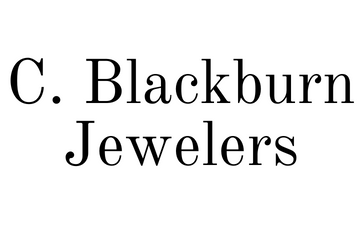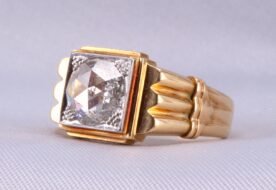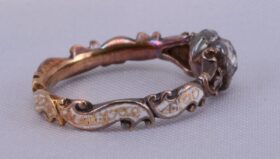
28 Mar Jewelry Designers of the Art Nouveau Period
Seen Above: The Art Nouveau Casa Batlló designed by Antoni Gaudí in Barcelona, Spain
As collectors of vintage and antique jewelry, C. Blackburn Jewelers of La Jolla has a special fascination with the Art Nouveau period, which emerged during the late 19th century and lasted until about 1920, when it gave way to the Art Deco era.
The Art Nouveau period was a time of great creativity and innovation in the decorative arts, with jewelry, architecture, and fashion design all embracing the movement’s emphasis on organic shapes, flowing lines, and natural forms, such as flowers, plants, and animals.
In jewelry design, Art Nouveau was marked by a departure from the rigid and formal designs of the Victorian era. Instead, jewelers embraced asymmetry, curvilinear shapes, and the use of materials such as enamel, pearls, and semi-precious stones. The use of nature-inspired motifs was also prominent, with dragonflies, butterflies, and peacock feathers being popular subjects.
In architecture, Art Nouveau was marked by the use of ornate, curving lines and the incorporation of natural forms and motifs. Buildings were designed to flow seamlessly into their surroundings, with features such as undulating roofs and facades, organic shapes, and the use of natural materials such as stone and wrought iron.
In fashion design, Art Nouveau was marked by the use of flowing fabrics and asymmetrical lines. Women’s clothing featured soft, flowing silhouettes, often adorned with delicate embroidery or lace. The use of natural materials such as silk, velvet, and chiffon was also common.
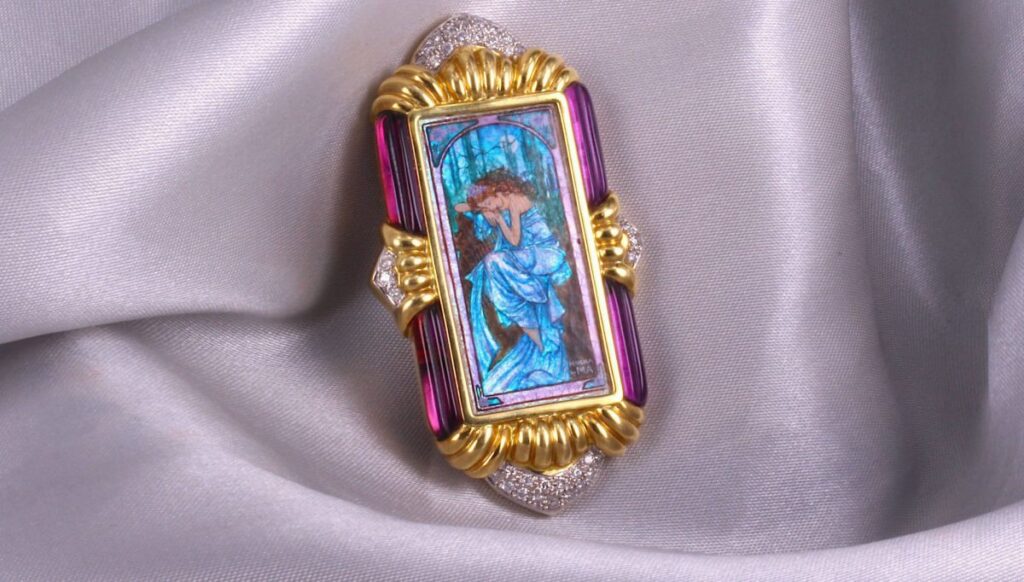
Famous Art Nouveau Jewelry Designers
The most prominent jewelry houses of late 19th century, such as Cartier, Tiffany & Co., Boucheron, and Van Cleef & Arpels, all produced exquisite Art Nouveau jewelry. Some of the most legendary jewelry designers during this period are as follows:
René Lalique
René Lalique (1860-1945) was a French artist and designer who is best known for his work in the field of glassmaking and jewelry design. Lalique’s breakthrough came in the 1890s, when he began to create a series of innovative glass pieces that incorporated natural motifs such as flowers, insects, and animals. These designs were characterized by their delicacy, intricate detail, and innovative use of materials such as opals and enamels.
Lalique’s glasswork quickly gained a reputation for its beauty and originality, and his pieces were eagerly sought after by collectors and art enthusiasts. In addition to his work in glass, Lalique was also a prolific jewelry designer. He created a range of Art Nouveau-inspired jewelry pieces that featured natural motifs such as dragonflies, butterflies, and flowers. Lalique’s jewelry designs were noted for their delicate, intricate detailing and their innovative use of materials such as ivory, horn, and semi-precious stones.
Lalique’s work was exhibited at many of the major international exhibitions of the early 20th century, including the Paris Exposition Universelle of 1900 and the 1925 International Exhibition of Modern Decorative and Industrial Arts in Paris. Today, René Lalique’s work is highly sought after by collectors and is considered to be among the most important examples of Art Nouveau design.
Georges Fouquet
Georges Fouquet (1862-1957) was a French jeweler and designer who was one of the most prominent figures in the Art Nouveau movement. Fouquet’s jewelry designs were characterized by their intricate, organic forms and their use of unconventional materials such as enamel, ivory, and semi-precious stones. He often incorporated natural motifs such as flowers, butterflies, and dragonflies into his designs, and he was known for his innovative metalworking techniques, including the use of plique-à-jour enamel, a technique that allows light to pass through the enamel and creates a stained glass effect.
Fouquet’s work was widely exhibited during the Art Nouveau period, and he won numerous awards for his designs. He was particularly noted for his collaborations with the artist Alphonse Mucha, with whom he worked on a number of important commissions, including the interior of the Fouquet jewelry store on the Rue Royale in Paris. His work can be seen today in many museum collections around the world, including the Musée d’Orsay in Paris and the Victoria and Albert Museum in London.
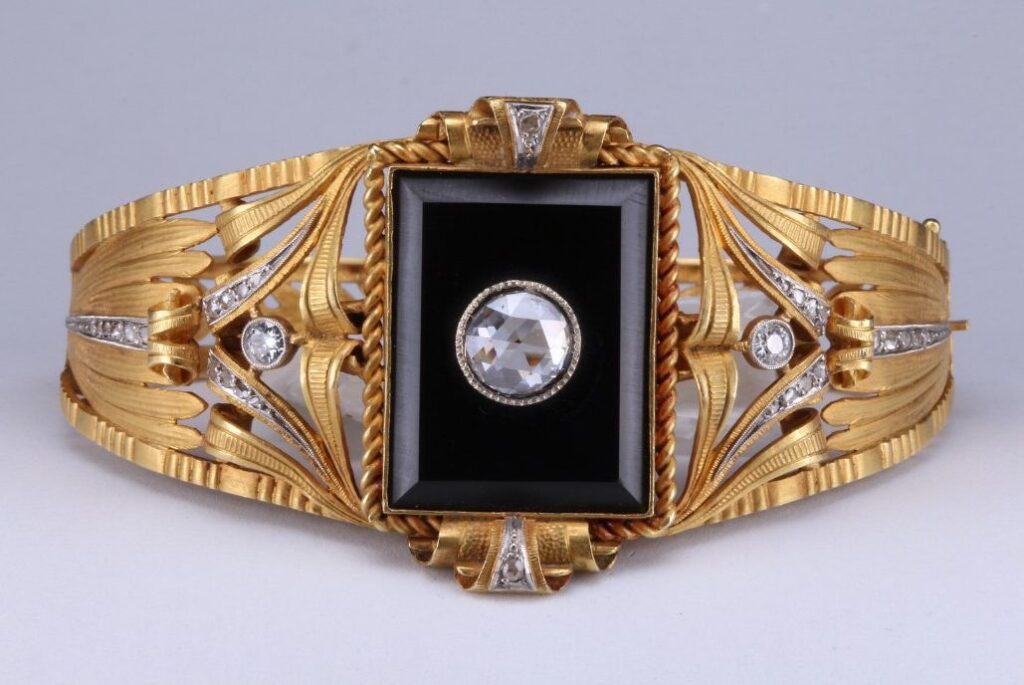
Henri Vever
Henri Vever (1854-1942) was a French jeweler, dealer, and collector. In the late 19th century, Vever became interested in the new Art Nouveau style that was emerging in France, and he began to commission pieces from leading Art Nouveau designers such as René Lalique and Georges Fouquet. He also began to collect and sell Art Nouveau jewelry, building up an extensive collection of pieces by leading designers of the period.
Vever’s own jewelry designs were notable for their delicate, organic forms and their use of unconventional materials such as horn, ivory, and enamel. He often incorporated natural motifs such as flowers and insects into his designs, and he was known for his innovative use of color and texture.
Vever played a key role in promoting the style to a wider audience, and he helped to establish the careers of many of the leading designers of the period. In addition to his work as a dealer and collector, Vever was also a prolific writer on the subject of jewelry and the decorative arts, and his books on Art Nouveau jewelry remain important references for scholars and collectors today.
Louis Comfort Tiffany
Louis Comfort Tiffany (1848-1933) was the son of Charles Lewis Tiffany, who found Tiffany & Co. in 1837. Many of his Art Nouveau jewelry designs were characterized by their use of iridescent glass, which he developed himself and called Favrile glass. Tiffany’s glass had a unique quality that gave it a shimmering, iridescent effect, and he used this material to create a range of jewelry designs that were highly sought after by collectors.
Louis Comfort Tiffany’s jewelry designs often incorporated natural motifs such as flowers and insects, and he was known for his use of enameling and gemstones in his work. His designs were also notable for their use of innovative metalworking techniques, such as chasing and repoussé. He was also interested in the iridescent qualities of certain gemstones, such as opals and moonstones. He developed a unique technique of layering these stones to create a shimmering, ethereal effect that was characteristic of his jewelry designs.
Tiffany’s Art Nouveau jewelry designs are highly sought after by collectors and are considered to be among the most important examples of the style. His work can be seen in many museum collections around the world, including the Metropolitan Museum of Art in New York City and the Victoria and Albert Museum in London.
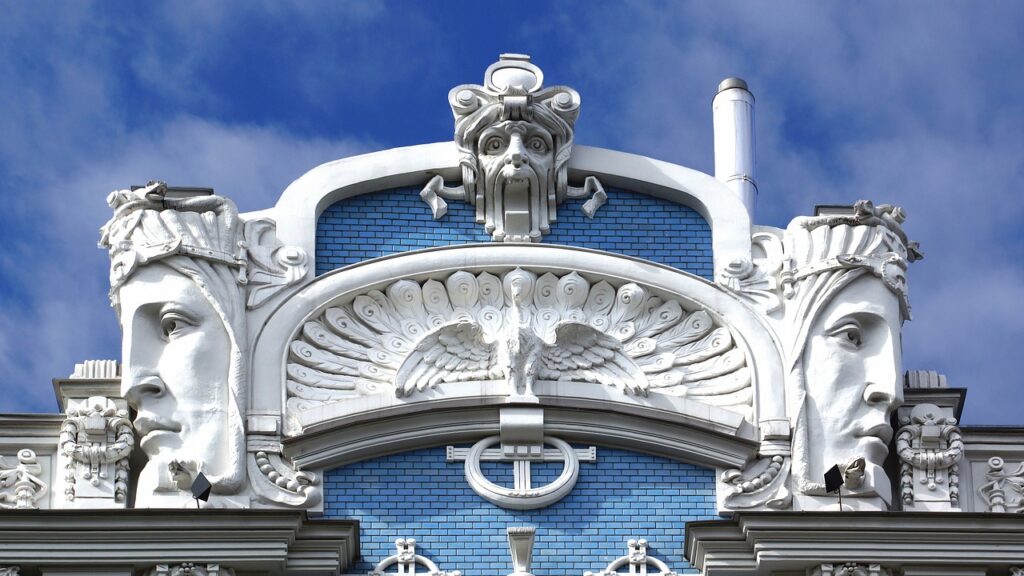
Philippe Wolfers
Philippe Wolfers (1858-1929) was a Belgian jewelry designer and artist who helped define the Art Nouveau movement. Wolfers’ jewelry designs were characterized by their intricate, organic forms and their use of unconventional materials such as enamel, ivory, and mother-of-pearl. He often incorporated natural motifs such as flowers, leaves, and insects into his designs, and he was known for his innovative use of color and texture.
In addition to his work as a jeweler, Wolfers was also an accomplished sculptor and metalworker. He created a range of Art Nouveau-inspired decorative objects, including lamps, vases, and other household items that were notable for their flowing, organic forms and their exquisite craftsmanship.
Wolfers’ work was widely exhibited during the Art Nouveau period, and he won numerous awards for his designs. He was particularly noted for his collaborations with architects and designers, including Henry van de Velde, with whom he worked on a number of important commissions. Today, Wolfers’ Art Nouveau pieces can be seen in many museum collections around the world, including the Musée d’Orsay in Paris and the Metropolitan Museum of Art in New York.
Lucian Gaillard
Lucien Gaillard (1861-1942) was a French jeweler who was very active during the Art Nouveau period. Gaillard’s jewelry designs were characterized by their use of unusual materials such as ivory, horn, and glass, as well as precious metals and gemstones. Like other Art Nouveau jewelry designers, he often incorporated natural motifs such as flowers, leaves, and insects into his designs, and he was known for his innovative use of enamel and other decorative techniques.
Lucien Gaillard was particularly skilled in the technique of plique-à-jour enamel, which involves creating a stained glass-like effect by allowing light to pass through transparent enamel. He also developed a unique technique of creating a frosted effect on glass, which he used to create delicate, translucent pieces that were highly prized by collectors.
In addition to his work as a jeweler, Gaillard was also a designer of decorative arts, and he created a range of objects in the Art Nouveau style, including vases, lamps, and other decorative objects that were characterized by their sinuous lines and naturalistic forms. Gaillard’s work was highly influential during the Art Nouveau period, and today his designs are considered to be among the most important examples of the Art Nouveau style.
Art Nouveau Inspired Jewelry
If you would like to shop for Art Nouveau jewelry or have San Diego jewelry designer Carl Blackburn design for you a ring, earrings, or brooch in the style of this gorgeous antique period, please contact C. Blackburn Jewelers today. Call 858-251-3006 or send us a message below. Our boutique jewelry store in La Jolla Cove is open by appointment.
